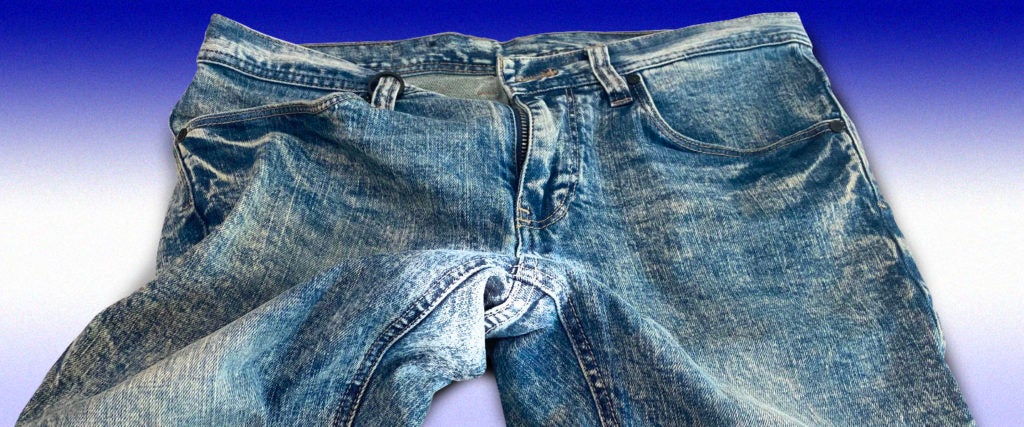I’ve always found the vagina to be cryptic, in a rather beautiful way. What is she trying to tell us by ridding her uterine lining once a month? I know the answer is “because reproduction,” but why does she have to be so dramatic about it?
It’s more than just that, though. Another fun little thing the vagina does is produce regular, day-to-day discharge capable of bleaching clothing because of how acidic it is. Allegedly, this is because an acidic environment helps protect it from various bacterial and fungal infections.
Sounds good, but this leaves me with a very, very, very serious question: Can I use this vaginal fluid to acid-wash other articles of clothing, too? There’s plenty of talk on TikTok and in news stories about the vagina’s bleaching effect on underwear, but what about, say, a trendy pair of acid-washed jeans?
@uhlissuhrose Please duet this with your pussy bleached underwear so I don’t feel alone. #underwear #WhatsPoppin #ThrowbackSongs #QuickRecipes #foryou #fyp #wap
Some background on the vagina: Per MedicalNewsToday, a healthy vaginal pH is between 3.8 and 4.5. This acidity is the result of Lactobacilli bacteria that live in the vagina, which secrete lactic acid and hydrogen peroxide. Hydrogen peroxide can indeed lighten fabric — we might say it has “bleaching” properties — but it’s chemically different from liquid bleach. Either way, this is all perfectly normal and indicative of a happy vagina, though not necessarily a requirement for one.
Now onto the clothing bit. If vaginal hydrogen peroxide can lighten undies, then yeah, of course it could lighten another fabric. However, it wouldn’t be an easy feat. So-called “bleach” spots emerge on underwear because the underwear is right there gathering up the vaginal fluid for hours on end. More than that, it often remains there until the underwear is washed. In order for vaginal fluid to lighten another item, similar circumstances would need to be met.
Online guides to acid-washing jeans typically call for using liquid bleach, as it’s stronger than hydrogen peroxide. However, there are guides on how to lighten a pair of jeans using hydrogen peroxide, too. From these, it’s clear that hydrogen peroxide could yield a similar “acid-washed” look, but it’s not always as bold as it would be had you used bleach instead. In guides that use bleach, it’s often diluted in a spray bottle with water. In guides that use hydrogen peroxide, it can be applied directly with a sponge.
Now this is where all my guessing comes in. For an acid-wash style, a spray bottle is probably best. Hypothetically, one could collect their vaginal fluid, put it into a spray bottle, dispense it onto their jeans and leave it for several hours, maybe even a day or two and yield themselves some acid-washed pants.
Most of the guides I’ve found don’t offer specific measurements for how much bleach or hydrogen peroxide you’d need, but let’s assume you want at least eight ounces to cover a whole pair of jeans. On average, vaginas produce half a teaspoon of fluid per day. There are 48 teaspoons in eight ounces, meaning you’d need 96 days of vaginal fluid to have enough for a pair of jeans.
Complicating this further is the fact that the precise pH varies depending on where one is in their menstrual cycle, and that it’s not possible to collect any vaginal fluid on period days. So, let’s just say you’d need roughly three months of collection to have enough fluid for this, assuming you could even figure out how to harvest vaginal discharge at all.
Would the hydrogen peroxide retain its strength during this time? I don’t know, but I’m sure some art student could try this all out and report back. In the meantime, a bottle of bleach or hydrogen peroxide costs a dollar. Let’s stick with that for our bleaching needs for now.

